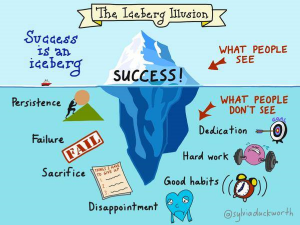TRAIN YOUR BRAIN
BRAIN TRAINING
Training comes in many forms depending the sport you have selected.
For shooting the best physical training for the sport is swimming and exercise similar to Tai Chi. Add to this walking one kilometre a day with breathing exercises by inhaling through the nose and exhaling through the mouth.
Swimming because it builds the upper chest and shoulders to the point that the shooter athlete has little difficulty in holding an 5-6 kg rifle on target for the completion of each match.
Swimming also strengthens the lungs including mastering mental control of lungs, which is most important. Swimming has advantages for two main reasons, first the centre of balance of any human is located at the hips or pelvis and the legs provide the muscle strength (gained through kicking in swimming) for maintaining the body balance through out the shooting procedure, and secondly the upper shoulders and arm muscles are strengthened for holding the rifle in position.
Natural Tai Chi is excellent for perfecting mental control over the neuromuscular movements of each coordinated movement during the exercise. Tai Chi is not a marshal arts style of exercise but a Chinese exercise combination used for the purpose of physical unity and the practice of mental control through intensive concentration.
The shooting athlete can, through Tai Chi or its equivalent mental practice, formulate the correct responses with appropriate actions and file same into the memory ready for later use.
Next we address some important functioning elements of the “Mental
Processes”.
- Mental practice and analysis.
- Mental practice with dry-firing.
- Llive firing validation.
Phase 1. Mental practice and analysis. Whether we acknowledge it or not, while we are shooting, any given shooting function performed is being constantly and minutely analysed and filed into memory for later use. It is during automatic functioning (ie a match) that the brain extracts this data from memory and puts such required functions into effect, hence we remember how to shoot!!!. This information is constantly being updated and over-written. The learning phase occurs during training and then filed into memory…… The value of good training cannot be over-stated!
Phase 2. Mental practice used with dry-firing practice. During the mental analysis we have unwittingly analysed and stored the function/s (remember that sometimes some of the stored information is not necessarily beneficial due to other factors, however we often store it anyway….humans being humans…and the next skill is to filter what is gold and what is gravel) Next we must filter and exercise what we have learned and placed into memory. Dry firing is routinely used for this purpose as it provides many positive scenarios if tackled correctly.
During this “dryfire” the timing and rhythm sequences can be practices and smoothed. The effort also renews the mind and assist with the refinement of the overall shooting technique.
Phase 3. Dryfiring validation requires live firing. Live fire results is a report card of how well the shooting athlete has accomplishing the refined shooting technique in combination with the mental skill and attention to win. The shooting athlete is that athlete’s sole competitor, no one else.
One other item that many do not realise is the relatively short time the mind has to act upon any given function. It is very quick because of the design of the mental entity. How long you can hold your attention on any given item tends to control how long you can perform valued mental practice or dryfire training. There is a point beyond which dryfire training purely becomes muscle holding practice – take care to note the balance.
When we shoot….
We use the condition of heightened attention and then move to intensive deeper concentration. Heightened attention is the state you normally use during the set up of position and natural point of aim – external factors come in here.
Intensive concentration occurs from the 2-3 second mark of the mental checklist to trigger pull time (this state often lasts 5-6 seconds and no more). Then you return to heightened attention which is not intensive concentration…Are you confused now?
For many years, neuroscientists have generated evidence that brain activity helps to shape brain architecture. Now, scientists have used sophisticated imaging techniques to demonstrate and prove this theory. These experiments have us closer to understanding how the wiring of the brain is established and modified by mental analysis and experience.
“Seeing is believing.” We have the understanding of how the brain responds to stimulation such as mental practice and dryfiring training sessions – the Scatt machine assists here as the shooter and coach see the results. Stimulation can be originating externally or internally during training sessions. Learning memory is developed over a 5 to 30 minute period and will last in temporary memories from a 20-minute period to a 2-hour period. Long-term memory takes many repetitions of the these periods of mental practice and dryfiring periods. There are simply no short-cuts!
Dryfiring may be boring but if the shooting athlete does not mentally absorb every aspect of the shooting position and shooting technique, the brain brain activity will not occur and shooter learning will never occur.
All mental absorption must be conducted with correct, perfect or model examples to allow the brain to build upon this basic correctness. It is of little point to analyze that which is less than the best possible.
Utilise the power and learn from your brain….there are no short-cuts.

